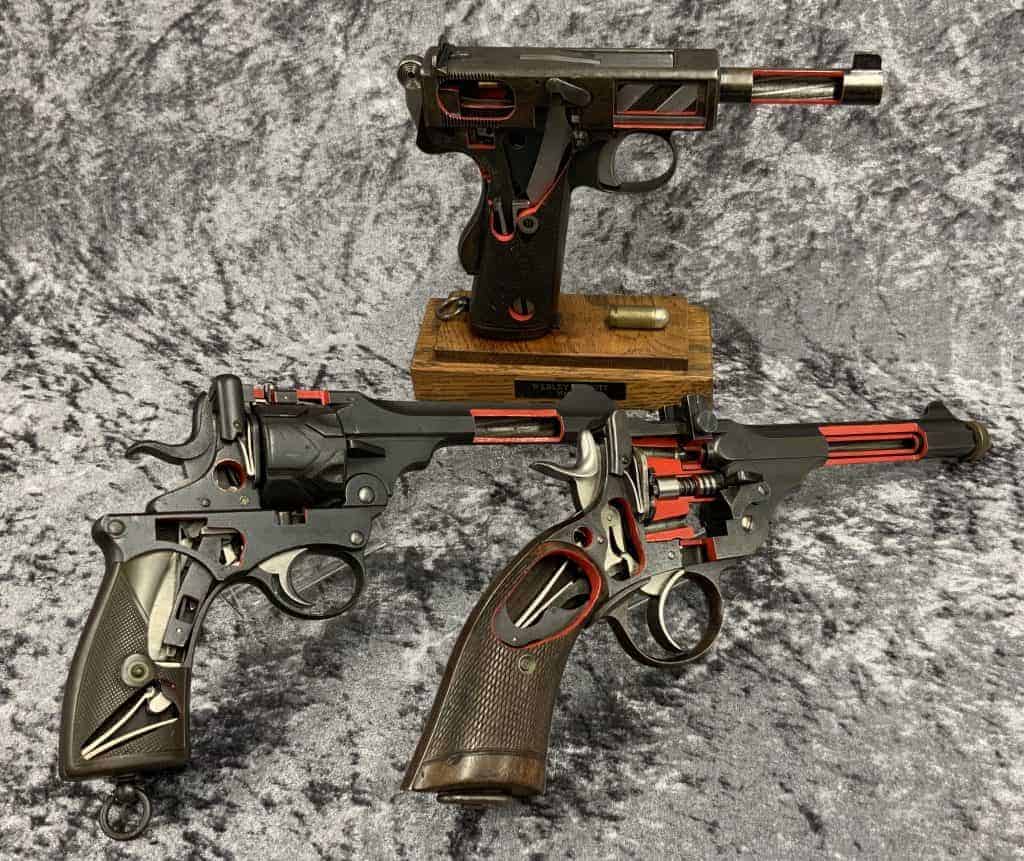A gorgeous trio of Webley cutaway pistols.
1) 1914 Webley & Scott Self-Loading pistol Mk1 .455
The Webley Self-Loading Pistol was an early magazine-fed pistol. The gun was designed in 1910 by the Webley & Scott company. The Mk. 1 entered police service in 1911 in a .32ACP model for the London Metropolitan Police. The .455 version was adopted by the Royal Navy in 1912 as the first automatic pistol in British service. The pistol was also adopted by the Royal Horse Artillery and the Royal Flying Corps. Its predecessor was the unsuccessful Mars Automatic pistol.
2) A Webley Fosbery .455 Self Cocking Automatic revolver. The Webley–Fosbery Self-Cocking Automatic Revolver is an unusual, recoil-operated, automatic revolver designed by Lieutenant Colonel George Vincent Fosbery VC and produced by the Webley & Scott company from 1901 to 1924. The revolver is easily recognisable by the zig-zag grooves on the cylinder.
Colonel Fosbery (1832–1907) devised a revolver that cocked the hammer and rotated the cylinder by sliding the action, cylinder and barrel assembly back on the frame. The prototype was a modified Colt Single Action Army revolver. Fosbery patented his invention 16 August 1895 and further improvements were patented in June and October 1896.
Fosbery took his design to P. Webley & Son of Birmingham. P. Webley & Son, which merged with W.C. Scott & Sons and Richard Ellis & Son in 1897 to form the Webley & Scott Revolver and Arms Co., was the primary manufacturer of service pistols for the British Army as well as producing firearms for civilian use. Webley further developed the design and the Webley–Fosbery Automatic Revolver was introduced at the matches at Bisley of July 1900.
3) .455 Webley Mk III with a .22RF conversion. Introduced in 1898. The famous “Manstopper” bullet intended for police, civilian and colonial use. Essentially, the Mk III was a 218 grain lead “hollowpoint” design, propelled by cordite. The cylindrical bullet had hemispherical hollows at each end—one to seal the barrel, the other to deform on impact. This bullet was soon prohibited for use by the military because it was not compliant with the Hague Convention of 1899. The Mark III was withdrawn from service in 1900 and the Mark II was reintroduced.
